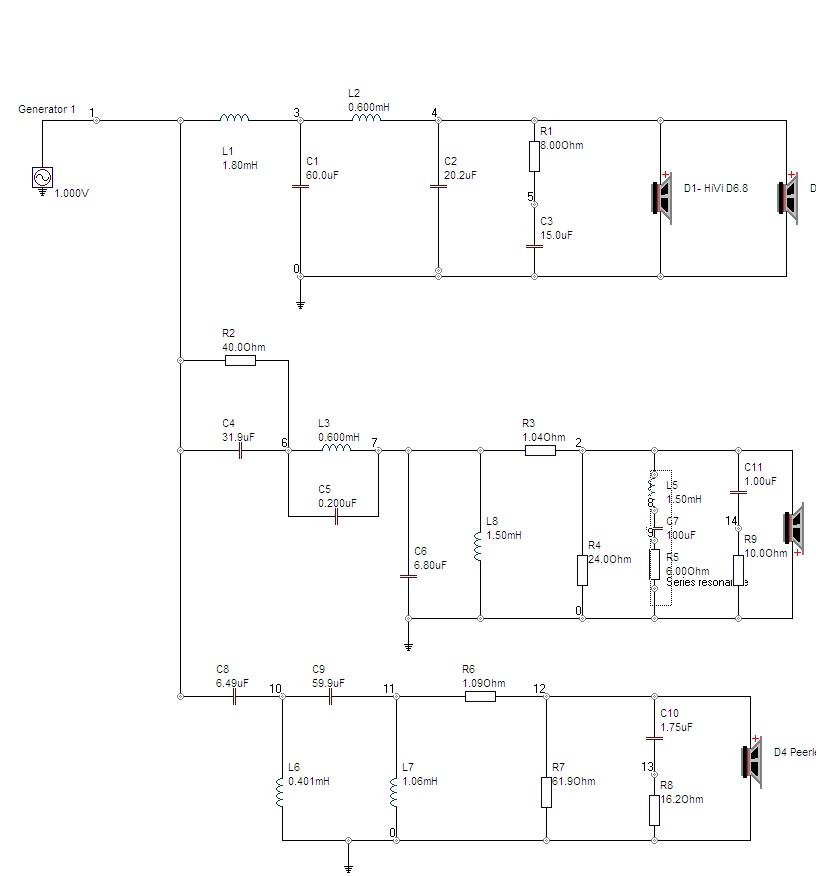Hey all, newb on this forum, but I know you guys may have some answers for me.
I am starting to look at ideas for a Senior EE project for this coming year, and I have really always been interested in speaker design. I'm pretty positive the whole project would be enough work to constitute a project; however, through all of my reading I'm still lost a tad due to cost limitations.
Project Plans:
Design:
- 3 or 4 way speaker system
- Powered with 110W RMS x 2 @ 8 Ohms
- Design/Build Custom Passive Crossover utilizing (most likely) 2nd-order Butterworth filters for a 12db/octave slope
- Doesn't need to look pretty, and I'm not a carpenter so It won't - haha
- I want it to not sound like crap - duh
Cost:
- I'm at a crossroads, if I take the school's money I'm limited to a budget of $200 I believe (barely enough to complete the project) and they keep my project at the end of the year. If I spend my own money, it's out of pocket but I get to keep a (hopefully) great sound set of floor speakers for my HT setup.
- Out of Pocket budget: ~$400
Questions/Suggestions:
- 3 or 4 way setup, I'll have 3 months basically to design the crossovers, speaker cabinets, and pick drivers.
- At one point in time, I had actually thought of creating some basic 2-way speakers with a high SPL: > 90db/w/m and then creating a basic 15w Tube Amplifier, but I'm not sure how much work would go into both of these projects.
One last tidbit: I have 1 semester to design, block diagram, plan, and basically order all of my parts, then I have my 2nd semester to build, troubleshoot, and get my project working. Each semester is approximately 15 weeks long, or a little over 3 months.
Coolness factor:
Tube amp powering custom built 2-way speakers 10/10
SOOO WHAT do you think?
/Ramble
I am starting to look at ideas for a Senior EE project for this coming year, and I have really always been interested in speaker design. I'm pretty positive the whole project would be enough work to constitute a project; however, through all of my reading I'm still lost a tad due to cost limitations.
Project Plans:
Design:
- 3 or 4 way speaker system
- Powered with 110W RMS x 2 @ 8 Ohms
- Design/Build Custom Passive Crossover utilizing (most likely) 2nd-order Butterworth filters for a 12db/octave slope
- Doesn't need to look pretty, and I'm not a carpenter so It won't - haha
- I want it to not sound like crap - duh
Cost:
- I'm at a crossroads, if I take the school's money I'm limited to a budget of $200 I believe (barely enough to complete the project) and they keep my project at the end of the year. If I spend my own money, it's out of pocket but I get to keep a (hopefully) great sound set of floor speakers for my HT setup.
- Out of Pocket budget: ~$400
Questions/Suggestions:
- 3 or 4 way setup, I'll have 3 months basically to design the crossovers, speaker cabinets, and pick drivers.
- At one point in time, I had actually thought of creating some basic 2-way speakers with a high SPL: > 90db/w/m and then creating a basic 15w Tube Amplifier, but I'm not sure how much work would go into both of these projects.
One last tidbit: I have 1 semester to design, block diagram, plan, and basically order all of my parts, then I have my 2nd semester to build, troubleshoot, and get my project working. Each semester is approximately 15 weeks long, or a little over 3 months.
Coolness factor:
Tube amp powering custom built 2-way speakers 10/10
SOOO WHAT do you think?
/Ramble

 . Look at Dayton drivers and you will stay in budget and can get great results.
. Look at Dayton drivers and you will stay in budget and can get great results.


Comment